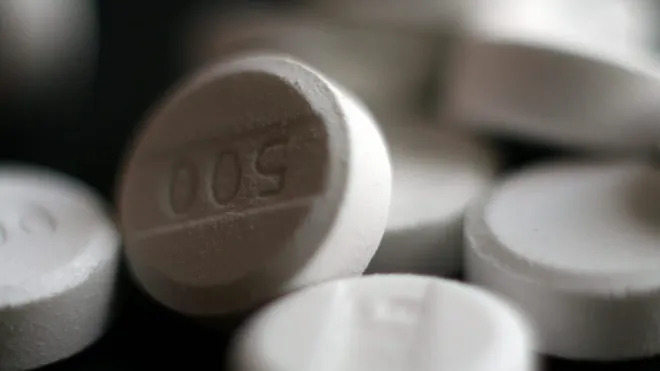Another promising young college student has died. The truth about fentanyl.
Seven months ago, University of North Carolina at Chapel Hill student Elizabeth Grace Burton died two days after overdosing on a blend of drugs and alcohol, according to the Assembly, which was the first to report her death this week.
A state autopsy report said Burton, 19, died of a brain injury caused by cardiac arrest following ingestion of a toxic mix of cocaine and alcohol, while a private autopsy also found fentanyl and Gamma-Hydroxybutyric acid (GHB) — a depressant known for its euphoric and calming effects — in Burton’s system. (The state report detected fentanyl in Burton’s urine, but officials did not say it contributed to her death.)
The university’s director of student wellness Dean Blackburn told WUNC last month that three active students and an alum have died of “fentanyl poisoning” in the last two years. The university would not confirm with USA TODAY if Burton was included in that tally.
Fentanyl is a synthetic opioid prescribed for severe pain management. It’s up to 50 times stronger than heroin and 100 times stronger than morphine. Just 2 milligrams — an amount small enough to fit on the tip of a pencil — can be lethal.
Because it’s so potent, fentanyl is often added to other drugs such as cocaine, methamphetamine and heroin, making them cheaper and more dangerous, particularly for teens, college students and other young adults.
“This scenario is sadly not uncommon, and it can happen to anyone,” said Dr. Ryan Marino, an emergency physician and addiction medicine specialist at University Hospitals Cleveland Medical Center. “This is a reminder of how an unregulated drug supply is always going to be unpredictable and unsafe.”
The best and only way to eliminate the risk of accidental fentanyl exposure is to avoid drugs all together. But Marino says a more realistic piece of advice for those who plan on using them is to "never use alone."
Here are other important things to know.
Is it obvious when drugs are contaminated with fentanyl?
No. You cannot see, taste or smell any amount of fentanyl in drugs, the CDC says.
Never assume drugs are safe because you know where or who they came from, experts say; your body could also react differently every time you use drugs.
Is there a way to guarantee drugs don’t have fentanyl?
People can use test strips that detect fentanyl in different drugs like cocaine, heroin and methamphetamine, and drug forms, such as pills, powder and injectables, in about five minutes.
It involves dissolving a small amount of a drug in water that you dip a piece of paper in. If the test is positive, throw the drugs out. If it’s negative, be wary because the strips aren't 100% accurate, can’t tell you how much fentanyl is present and can only detect a handful of fentanyl analogs: drugs with similar chemical structures, like the more potent carfentanil.
Still, experts recommend testing drugs anyway. “While they certainly aren’t foolproof, they’re an important tool we have that can reduce harms from an unsafe drug supply,” Marino said.
Fentanyl test strips are available at your local health department or community organization; they can also be purchased online. Keep in mind, however, that some states consider these tests “criminal drug paraphernalia,” Marino said.
How do I know someone is overdosing — and what do I do?
Symptoms of an opioid overdose include:
- Small pupils
- Slow or shallow breathing
- Cold, clammy skin
- Limp or flimsy arms and legs
- Loss of consciousness
- Vomiting, or choking or gurgling sounds
- Gray, blue or pale skin, as well as blue or purple lips and nails
- No signs of breathing
If you aren’t sure if a person is high or overdosing, the CDC suggests treating it like an overdose to be safe. Here’s what you should do:
- Call 911 immediately.
- Administer naloxone if available. It’s a life-saving medication that can reverse the effects of an opioid overdose and comes as a nasal spray or injectable. You can buy it at a local pharmacy without a prescription in most states, or get it for free at your health department.
- Keep them awake and breathing.
- Lay them on their side to prevent choking.
- Stay with them until emergency responders arrive.
Avoid putting a person suspected of overdosing in a cold shower or bath; hitting them to wake them up; or trying to make them vomit, as that can increase their risk of choking.
And no, you can't overdose on fentanyl just by touching it.
Can I get into legal trouble for helping someone who is overdosing?
In many cases — no.
Most states have Good Samaritan laws that protect the person who is overdosing or the person who called 911 from certain criminal penalties.

Disclaimer: The copyright of this article belongs to the original author. Reposting this article is solely for the purpose of information dissemination and does not constitute any investment advice. If there is any infringement, please contact us immediately. We will make corrections or deletions as necessary. Thank you.







